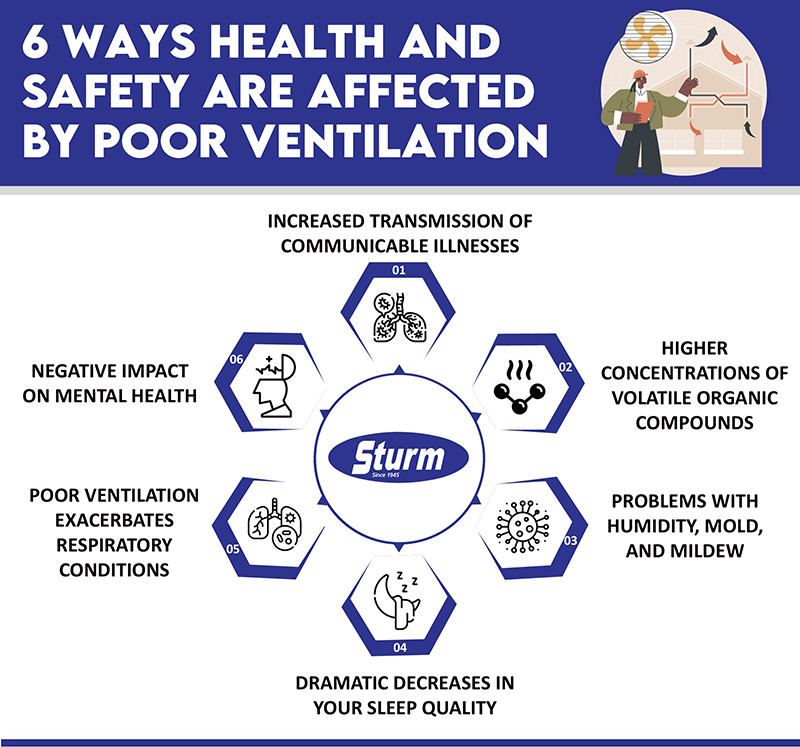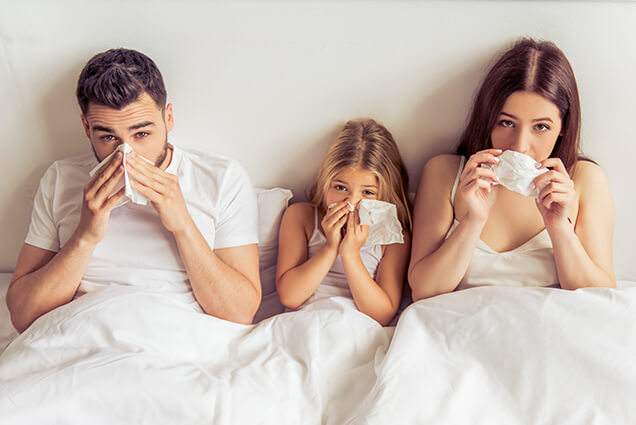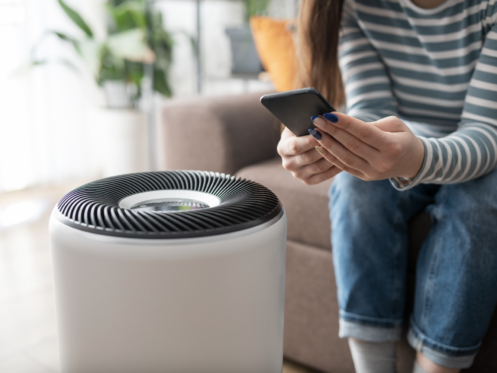Proper insulation is fundamental for keeping your home warm in the winter and cool in the summer. It helps prevent heat loss during colder months and reduces heat gain during hot spells, ultimately leading to lower energy bills and a comfortable living space. Unfortunately, well-insulated modern homes can also prevent adequate fresh, outside air from getting in. Here are six health and safety concerns caused by poor ventilation.
1. Increased Transmission of Communicable Illnesses
When indoor spaces lack sufficient ventilation, airborne pathogens like viruses and bacteria accumulate, creating a higher concentration of these harmful microorganisms you and your family breathe. If your home is poorly ventilated, you’ll have difficulty slowing or stopping the spread of illness whenever someone gets sick.
2. Higher Concentrations of Volatile Organic Compounds
Also, everyday activities significantly increase VOC concentrations, such as using combustion appliances for cooking. In addition, many self-care products your family may use can contribute to VOC buildup in your home. For instance, spray-on deodorants and perfumes, nail polish, and nail polish removers add toxins to your living space.

Exposure to high levels of VOCs can lead to short-term and long-term health effects. In the short term, they may cause eye, nose, and throat irritation, headaches, dizziness, and allergic reactions. Health experts link long-term exposure to certain VOCs to more severe health issues, such as respiratory problems, damage to the central nervous system, and even cancer.
3. Problems With Humidity, Mold, and Mildew
Having poor ventilation doesn’t just trap allergens and other contaminants inside. It also traps moisture. While your cooling system provides some humidity regulation, having an overly tight home envelope and inadequate ventilation can lead to more indoor moisture than your central air conditioning can manage. Indoor humidity levels above 50% significantly increase the likelihood of mold and mildew growth. When these biological contaminants become airborne, it creates a barrage of indoor air quality (IAQ) and health concerns.
4. Dramatic Decreases in Your Sleep Quality
Having a low IAQ due to insufficient ventilation can lead to the following:
- Sore throats
- Sinus irritation
- Snoring
- Coughing and wheezing

In addition, according to the American Thoracic Society, poor indoor air quality is heavily associated with the development of sleep apnea.
5. Poor Ventilation Exacerbates Respiratory Conditions
Insufficient ventilation wreaks havoc on the health of those living with respiratory issues like obstructive pulmonary disease (COPD), asthma, and allergies. It’s also problematic for older adults and children. High concentrations of airborne contaminants can trigger uncomfortable symptoms for some household members.
6. Negative Impact on Mental Health
Poor indoor air quality can also affect your mental health. Studies have shown that indoor environments with inadequate ventilation may lead to feelings of discomfort, irritability, and decreased cognitive function. Good ventilation, on the other hand, improves air quality and contributes to a more pleasant and conducive living environment.
What You Can Do to Improve Your Home’s IAQ
One thing you can do is open windows and doors regularly to allow fresh air to circulate. Even airing your home once a day for 15 minutes can help reduce the concentration of airborne contaminants in your house. You can also purchase cleaning supplies and other household products that use natural ingredients. These products emit fewer harmful chemicals into your home.
You can supplement this strategy by incorporating IAQ technologies into your HVAC system. Some of these include a air purifier to remove harmful airborne particles from your home’s air and a dehumidifier to control moisture levels.
Contact the Professionals
At Sturm Heating & Air Conditioning, we have been serving the residents of Spokane, WA since 1945. We install, maintain, and repair heating and cooling systems. In addition, we provide indoor air quality services. Contact Sturm Heating & Air Conditioning today to schedule an appointment with one of our skilled technicians.


